Extreme slow growth as alternative strategy to survive deep starvation in bacteria
- PMID: 30792386
- PMCID: PMC6385201
- DOI: 10.1038/s41467-019-08719-8
Extreme slow growth as alternative strategy to survive deep starvation in bacteria
Abstract
Bacteria can become dormant or form spores when they are starved for nutrients. Here, we find that non-sporulating Bacillus subtilis cells can survive deep starvation conditions for many months. During this period, cells adopt an almost coccoid shape and become tolerant to antibiotics. Unexpectedly, these cells appear to be metabolically active and show a transcriptome profile very different from that of stationary phase cells. We show that these starved cells are not dormant but are growing and dividing, albeit with a doubling time close to 4 days. Very low nutrient levels, comparable to 10,000-fold diluted lysogeny broth (LB), are sufficient to sustain this growth. This extreme slow growth, which we propose to call 'oligotrophic growth state', provides an alternative strategy for B. subtilis to endure nutrient depletion and environmental stresses. Further work is warranted to test whether this state can be found in other bacterial species to survive deep starvation conditions.
Conflict of interest statement
The authors declare no competing interests.
Figures
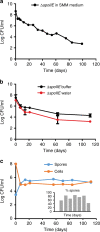
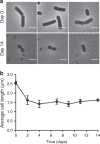
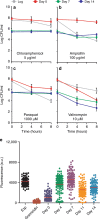
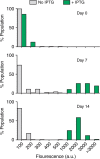

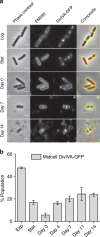

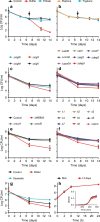
Comment in
-
Life in the slow lane.Nat Rev Microbiol. 2019 May;17(5):266-267. doi: 10.1038/s41579-019-0176-7. Nat Rev Microbiol. 2019. PMID: 30833717 No abstract available.
Similar articles
-
Environmental dependence of stationary-phase metabolism in Bacillus subtilis and Escherichia coli.Appl Environ Microbiol. 2014 May;80(9):2901-9. doi: 10.1128/AEM.00061-14. Epub 2014 Feb 28. Appl Environ Microbiol. 2014. PMID: 24584250 Free PMC article.
-
Potassium content during growth and sporulation in Bacillus subtilis.J Bacteriol. 1972 Oct;112(1):264-7. doi: 10.1128/jb.112.1.264-267.1972. J Bacteriol. 1972. PMID: 4627924 Free PMC article.
-
Bacillus subtilis during feast and famine: visualization of the overall regulation of protein synthesis during glucose starvation by proteome analysis.Genome Res. 2003 Feb;13(2):224-37. doi: 10.1101/gr.905003. Genome Res. 2003. PMID: 12566400 Free PMC article.
-
Bacillus subtilis sporulation and stationary phase gene expression.Cell Mol Life Sci. 2002 Mar;59(3):392-402. doi: 10.1007/s00018-002-8431-9. Cell Mol Life Sci. 2002. PMID: 11964117 Free PMC article. Review.
-
[Protein modification system in dormant cells].Yakugaku Zasshi. 2009 Oct;129(10):1221-5. doi: 10.1248/yakushi.129.1221. Yakugaku Zasshi. 2009. PMID: 19797877 Review. Japanese.
Cited by
-
Microbiome and metagenomic analysis of Lake Hillier Australia reveals pigment-rich polyextremophiles and wide-ranging metabolic adaptations.Environ Microbiome. 2022 Dec 21;17(1):60. doi: 10.1186/s40793-022-00455-9. Environ Microbiome. 2022. PMID: 36544228 Free PMC article.
-
Relative fitness of wild-type and phage-resistant pyomelanogenic P. aeruginosa and effects of combinatorial therapy on resistant formation.Heliyon. 2024 Nov 2;10(21):e40076. doi: 10.1016/j.heliyon.2024.e40076. eCollection 2024 Nov 15. Heliyon. 2024. PMID: 39559211 Free PMC article.
-
Utilization of gamma irradiated emulsified frying oil wastes as a carbon source for sustainable and economical production of bacterial cellulose membrane.BMC Microbiol. 2025 Apr 24;25(1):242. doi: 10.1186/s12866-025-03931-7. BMC Microbiol. 2025. PMID: 40275142 Free PMC article.
-
Insight into the adaptation mechanisms of high hydrostatic pressure in physiology and metabolism of hadal fungi from the deepest ocean sediment.mSystems. 2024 Jan 23;9(1):e0108523. doi: 10.1128/msystems.01085-23. Epub 2023 Dec 20. mSystems. 2024. PMID: 38117068 Free PMC article.
-
Multiple roads lead to Rome: unique morphology and chemistry of endospores, exospores, myxospores, cysts and akinetes in bacteria.Microbiology (Reading). 2023 Feb;169(2):001299. doi: 10.1099/mic.0.001299. Microbiology (Reading). 2023. PMID: 36804869 Free PMC article.
References
Publication types
MeSH terms
Substances
Grants and funding
LinkOut - more resources
Full Text Sources
Molecular Biology Databases
Miscellaneous

